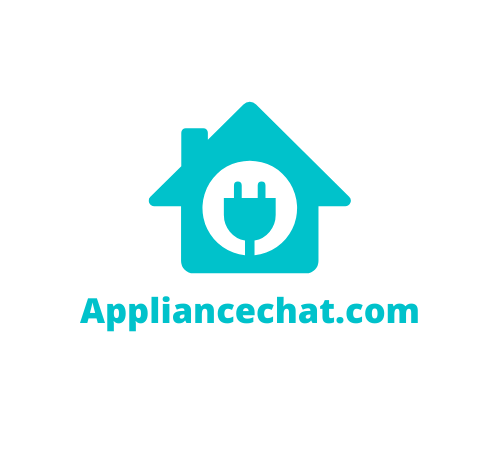Gas ovens are a common household appliance used for baking and cooking. They are popular because they provide even heat distribution and precise temperature control.
Understanding the components of a gas oven can help users troubleshoot problems and perform maintenance.
The main components of a gas oven include the burner, igniter, thermostat, and oven cavity. The burner is responsible for heating the oven and is connected to the gas supply.
The igniter is used to light the gas and start the heating process. The thermostat controls the temperature of the oven and ensures that it stays at the desired temperature.
The oven cavity is where the food is placed and is designed to distribute heat evenly throughout the cooking process.
By understanding the main components of a gas oven, users can identify potential problems and perform maintenance to ensure that their appliance is functioning properly.
It is important to regularly clean the oven and check for any signs of wear or damage to the components. With proper care and maintenance, a gas oven can provide reliable and efficient cooking for years to come.
Gas Supply Component
Gas Line
The gas line is the component that connects the gas source to the oven. It is usually made of stainless steel or copper, and it is responsible for carrying the gas from the source to the oven.
The gas line is usually installed by a professional plumber or gas fitter, and it needs to be properly sized and installed to ensure that the oven receives the correct amount of gas.
Gas Regulator
The gas regulator is a device that controls the pressure of the gas that enters the oven. It is usually located near the gas line and is responsible for reducing the pressure of the gas to a level that is safe for the oven to use.
The gas regulator is an important safety device that ensures that the oven does not receive too much gas, which could cause a fire or explosion.
Connect with an Appliance Repair Technician
Click here to use the chatbox to speak with one of our friendly technicians
No in-home service calls. No appointments.
Gas Valve
The gas valve is the component that controls the flow of gas into the oven. It is usually located near the gas line and is responsible for turning the gas on and off.
The gas valve is operated by a knob or switch on the oven, and it is an important safety feature that allows the user to control the flow of gas into the oven.
In summary, the gas supply component is an essential part of the gas oven. It consists of the gas line, gas regulator, and gas valve, which work together to ensure that the oven receives the correct amount of gas at the right pressure. It is important to have the gas supply component installed and maintained by a professional to ensure that it is safe and efficient.
Control Component
The control component is the part of the gas oven that allows the user to regulate the temperature and cooking time.
It consists of several sub-components, including the thermostat, ignition system, and timer.
Thermostat
The thermostat is the part of the control component that regulates the temperature inside the oven.
It works by sensing the oven’s temperature and automatically turning the gas on and off to maintain the desired temperature. The thermostat is usually located inside the oven, near the top or back.
Ignition System
The ignition system is responsible for lighting the gas and starting the oven. There are two main types of ignition systems: pilot light and electronic ignition.
The pilot light system uses a small flame to ignite the gas, while the electronic ignition system uses an electric spark.
Timer
The timer is the part of the control component that allows the user to set the cooking time. It can be either a mechanical or digital timer.
The mechanical timer works by turning a dial to the desired time, while the digital timer allows the user to set the time using buttons or a touchscreen.
In conclusion, the control component is an essential part of the gas oven. It allows the user to regulate the temperature and cooking time, ensuring that the food is cooked to perfection.
The thermostat, ignition system, and timer are the main sub-components of the control component, each playing a crucial role in the oven’s operation.
Heat Distribution Component
Gas ovens use a heat distribution component to evenly distribute heat throughout the oven. This component consists of several parts, including burners, oven racks, and a heat shield.
Burners
The burners are the primary source of heat in a gas oven. They are responsible for heating the air inside the oven, which then heats the food. Burners are typically located at the bottom of the oven and are controlled by a thermostat.
Oven Racks
Oven racks are used to hold food while it is being cooked. They are typically made of metal and are designed to withstand high temperatures.
The number of racks in an oven can vary depending on the size of the oven.
Related Articles
- Oven Stopped Working Mid-Cooking: Simple Answers
- Gas Oven Not Staying Lit: Clear Solutions
- Oven Not Starting But Stove Burners Working (Answered)
Heat Shield
The heat shield is located between the burners and the oven cavity. Its purpose is to reflect heat back into the oven cavity, which helps to distribute heat evenly throughout the oven.
The heat shield is typically made of metal and is designed to withstand high temperatures.
In summary, the heat distribution component is a crucial part of a gas oven. It is responsible for evenly distributing heat throughout the oven, which ensures that food is cooked evenly.
The burners, oven racks, and heat shield all play important roles in this process.
Safety Components
Gas ovens have several safety components installed to prevent accidents and ensure safe operation.
The following are two critical safety components found in most gas ovens:
Safety Valve
The safety valve is responsible for controlling the flow of gas to the oven’s burner. It is designed to shut off the gas supply to the oven if the flame goes out, preventing gas from escaping and causing a fire or explosion.
The safety valve is connected to a thermocouple, which senses the heat from the pilot light. If the thermocouple detects that the pilot light has gone out, it sends a signal to the safety valve to shut off the gas supply.
Connect with an Appliance Repair Technician
Click here to use the chatbox to speak with one of our friendly technicians
No in-home service calls. No appointments.
Flame Sensor
The flame sensor is a safety device that detects the presence of a flame in the oven. It is located near the burner and senses the heat from the flame.
If the flame sensor does not detect a flame, it sends a signal to the safety valve to shut off the gas supply to the oven. This prevents gas from escaping and causing a fire or explosion.
In summary, the safety valve and flame sensor are two critical safety components found in most gas ovens.
They work together to ensure safe operation of the oven and prevent accidents.
Maintenance and Care
Regular maintenance and care of a gas oven is essential to ensure its efficient operation and longevity. Here are a few tips on how to properly maintain and care for the main components of a gas oven:
Burners
The burners are the main source of heat in a gas oven. Over time, they can become clogged with food debris, grease, and other contaminants, which can affect their performance.
To keep the burners functioning properly, it is important to clean them regularly using a soft-bristled brush or a toothbrush.
If the burners are severely clogged, they may need to be removed and soaked in warm, soapy water before being cleaned.
Igniters
The igniters are responsible for lighting the gas burners when the oven is turned on. If an igniter becomes dirty or damaged, it may not be able to function properly, which can prevent the oven from heating up.
To prevent this from happening, it is important to clean the igniters regularly using a soft cloth or brush. If an igniter is damaged, it will need to be replaced.
Gas Valve
The gas valve controls the flow of gas to the oven burners. If the valve becomes clogged or damaged, it can prevent the oven from heating up or cause it to overheat.
To prevent this from happening, it is important to clean the valve regularly using a soft cloth or brush. If the valve is damaged, it will need to be replaced.
Connect with an Appliance Repair Technician
Click here to use the chatbox to speak with one of our friendly technicians
No in-home service calls. No appointments.
Oven Racks
The oven racks are the shelves on which food is placed when cooking in the oven. Over time, they can become coated with food residue and grease, which can affect their performance.
To keep the oven racks functioning properly, it is important to clean them regularly using warm, soapy water and a soft cloth or sponge. If the racks are severely caked with food residue, they may need to be soaked in warm, soapy water before being cleaned.
Door Gasket
The door gasket is the seal around the oven door that prevents heat from escaping. If the gasket becomes worn or damaged, it can cause the oven to lose heat and take longer to cook food.
To prevent this from happening, it is important to inspect the gasket regularly for signs of wear and tear. If the gasket is damaged, it will need to be replaced.
By following these simple maintenance and care tips, gas oven owners can ensure that their appliances operate efficiently and last for many years to come.
Related Articles
- Oven Broil Element 101: Beginners Guide
- Oven Stopped Working Mid-Cooking: Simple Answers
- Gas Oven Not Staying Lit: Clear Solutions
References
- Image by senivpetro on Freepik

